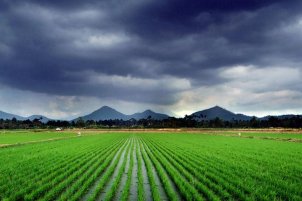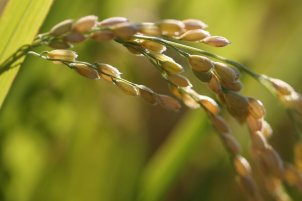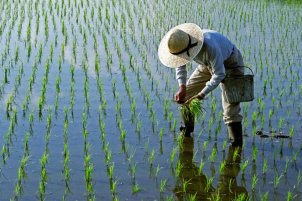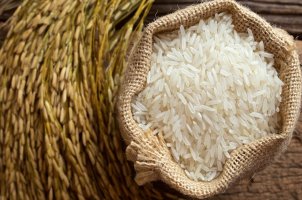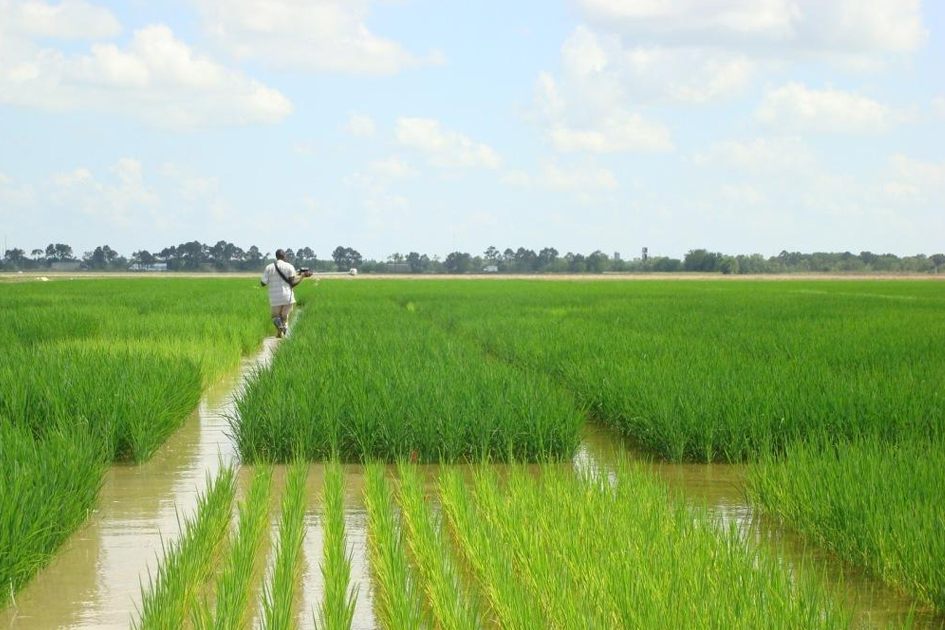As such, the rice production cycle is divided into 3 distinct stages. These are pre-planting, growth and post-production. In one of our previous blogs, we thoroughly discussed the initial stage of rice production, i.e. the pre-planting process.
With this blog, we’d now move to the next step of rice production process, which is the growth stage. The rice growth stage includes 5 different processes. These are:
- Rice plantation
- Water management
- Managing nutrients
- Weed control
- Disease and pest management
1. Rice Planting
Rice planting begins once the land has been prepared. As such, in rice farming, 4 different methods of cultivation exist.
These are mentioned as follows:
-
- Direct seeding or broadcasting: Broadcasting involves sowing the seeds directly by hand and is suitable for areas with infertile soil and dry land.
-
- Transplanting: Practiced where the soil fertility is optimum, transplanting is the most popular seed establishing method. It involves the transfer of pre-germinated seedlings from seedbed to the main field.
-
- Drilling: Confined to peninsular locations, this method only requires 2 persons; one for ploughing land and the other for planting seeds.
- Japanese technique: The Japanese method requires seeds to be sown on raised nursery beds which should further be transplanted in rows. It requires timely fertigation, i.e. injecting fertilizers and other chemicals into the soils, and weeding and is only used for high-yield rice varieties.
2. Water Management
Everyone involved in the process of rice production knows that rice of extremely sensitive to water shortage. Generally, rice is grown in fields that are continuously flooded for at least 10 days, almost a week until beginning the harvest. This is particularly important for lowland rice. This constant flooding ensures water sufficiency while controlling weeds.
Since there is a global shortage of water, it’s important to follow water management practices like constructing field channels, prepare and level land, and construct bunds.
3. Manage Nutrients
During the growth stage, rice plants require nutrients to grow and develop. Also, applying nutrients to the crop is also one of the most crucial steps for improving soil fertility and prevents nutrient imbalance in the field.
4. Weed Management
To prevent yield losses, bring down production cost and maintain grain quality, it’s fairly important to prevent and control weeds. Since weeds compete equally for sunlight, water and nutrients, it becomes all the more important to prevent them. Not just during the crop growth, weed management should be practiced during land preparation and in the nursery as well.
5. Disease and Pest Management
Weed is not the only enemy that we face during rice production; the rice plant faces a lot of foes during its growth. These are insects, rodents, viruses and diseases. On an average, each year, farmers lose about 37% of their crops to diseases and pests. It is, therefore, important for farmers to understand how pests and other enemies interact with crops and come up with necessary management practices.
They need to:
- Clean the field and farming equipment
- Use pest resistant varieties
- Avoid over fertilizing
- Implement natural pest inhibitors
- Refrain from applying pesticides during the initial 40 days of seed planting
For detailed information on the above-mentioned steps and any other information on rice growth, rice milling and rice storage, one should contact Nextech Agri Solutions, a New Delhi based rice planting and rice milling consultant.
 MAIL US :
MAIL US :
 CALL US :
>
CALL US :
>
